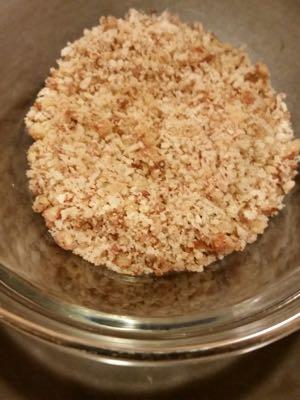Wheat bran mashes for horses – the pros and cons
There are tons of good, and not so good, reasons to feed wheat bran to horses. Why are there no cut-and-dry answers? What’s up with that? Let me be clear that I’m talking about wheat bran, not rice bran. Rice bran is commonly used as a fat source for performance horses and can help the older horse keep some weight.
jump to shopping
The pros of wheat bran mashes for horses:
- It’s inexpensive.
- It’s tasty. Most horses love it!
- It’s easy to store and easy to make. Keep it covered, and just add water.
- You can hide some medications in a bran mash.

Yum??
And the cons of wheat bran mashes for horses:
- As a source of nutrition, it’s super expensive because you have to feed way too much to get any nutrition. Except for phosphorus – there’s a boatload of that.
- The calcium and phosphorus ration is wildly out of whack – there is so much phosphorus in wheat bran that the horse’s body tries to compensate by taking calcium from the bones to balance this in the gut.
- There’s very little fiber – about 10%. Your average hay has 30% fiber. So, if you give a wheat bran mash for an upset tummy or colic in hopes of adding fiber, the loosened manure is due to a sudden diet change and not a high fiber meal of wheat bran. Because wheat bran is not high in fiber.
- Of course, follow the instructions of your Veterinarian, and if adding a mash for fiber and hydration for a few meals is part of the colic recovery, discuss using your horse’s regular feed in a super soupy concoction if you think your horse may not do well with a wheat bran mash.
- But here’s my question about feeding wheat bran to a colic case – unless your horse regularly eats wheat bran in his diet – this is going to be a diet change. We know that diet changes can cause digestive distress in horses. SO WHY FEED A COLIC CASE SOMETHING THAT COULD CAUSE MORE DIGESTIVE UPSET?

- Long-term feeding of wheat bran can lead to skeletal problems, especially in young horses as more and more calcium is removed from the bones. Hyperthyroidism is also a concern, which leads to enlargement of the facial bones and weakening of other bones.
- There is very little heat generated by feeding wheat bran in a warm mash. If you want to warm up your horse on a cold night, feed more forage (hay) that generates heat as it ferments over hours in your horse’s gut over several hours.
- Of course, if you want to feed wheat bran as a regular part of your horse’s diet, do so with the help of an Equine Nutritionist so that your horse’s calcium and phosphorus ratio stays balanced. A good rule of thumb is that no more than 10% of your horse’s meal should be wheat bran.
- I personally stay away from giving a weekly wheat bran mash treat for the very reason that you are not feeding it every day, so there’s a chance of digestive distress – so why give this to a horse with colic?
- And besides, I would rather give a small piece of carrot or apple as a treat daily, after my horse has done something awesome to earn it. Sometimes he’s just looking cute and that’s treat worthy enough. That being said, many horses do just fine with a weekly wheat bran mash.

Stock up here for your horse supplies! As an Amazon Associate, I earn from qualifying purchases, but it’s ZERO extra cents to you. You can also visit my Amazon storefront here: PEG storefront.
Thank you!







